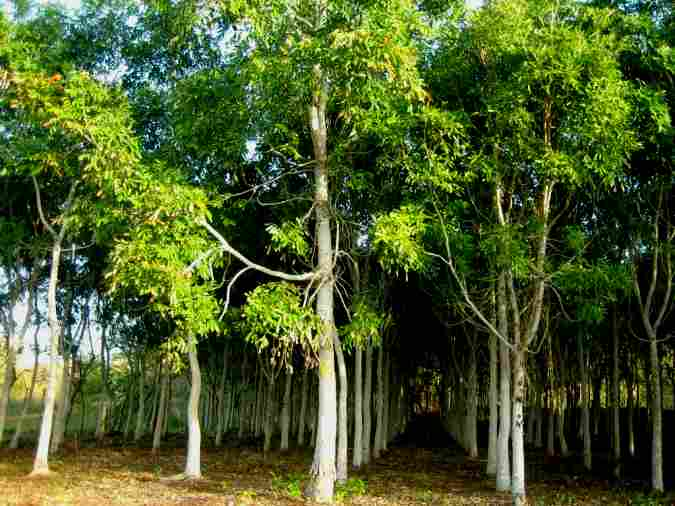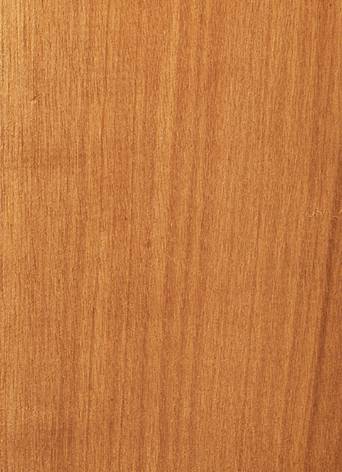
Nyatoh Species: Palaquium spp.
Family: Sapotaceae
A medium to large hardwood generally occurring throughout South East Asia and the Philippines although some species come from as far apart as India and the western Pacific Islands.
The most popular and recognized material is from the Palaquium spp. which are the lower density varieties that grow to a height of about 30 metres and usually occur in podsol soils or peat swamps with some also in mixed forest areas.
Timber Properties:
Density (average), 660kg m3 dry, Durability: Class 3, Strength Group, S4 green, SD4 dry, Hardness Rating (average), (Provisional), 3.1kN green, 3.8kN dry
Nyatoh is just as strong and as durable as Tectona Teak. Balau is actually stronger and more durable than Tectona Teak. Both are more dense than Tectona Teak.
Nyatoh Plantation

Tectona:Durability - Moderate
Strength - Strong
Density - 610-690 kilograms per cubic meter
Nyatoh:Durability - Moderate
Strength - Strong
Density - 600-800 kilograms per cubic meter
Nyatoh Hardwood

Timber:The timber of the Palaquium spp. is normally easy to work although silica in the heavier species may cause some difficulty and because of this range of species care needs to be taken when drying to avoid end splitting. It nails well and takes glue but sometimes exhibits burn marks when being turned or sanded and so care is recommended.
Heartwood is purple-pink to red-brown with the sapwood much lighter usually quite wide and very easy to distinguish and although susceptible to lyctid borer it is rarely attacked.
The texture is medium to coarse and even with the grain straight or wavy and sometimes
slightly interlocked. When freshly cut the timber normally has an unpleasant smell often referred to as sour.
Other Common Names:Bauvudi (Fiji islands), Nato (Philippines), Njatuh (Indonesia), Jangkar (Sarawak). This is a commercial grouping of species that weigh mostly 38 to 45 pcf air-dry.
Distribution:Widely distributed from India through Southeast Asia to the Philippines, New Guinea, and the Western Pacific Islands.
The Tree: Often 100 ft or more in height; trunk diameters up to 3 ft, stems may be fluted.
The Wood - General Characteristics: Heartwood varies from pale pink to red brown or purple brown; sapwood lighter in color, not sharply defined. Grain straight to shallowly interlocked; texture moderately fine, even; has a sour smell when freshly milled; sometimes shows an attractive moire or "watered silk" figure.
Weight: Basic specific gravity (ovendry weight/green volume) varies considerably with species but commercial grouping is mostly 0.50 to 0.60; air-dry density 38 to 45 pcf.
Mechanical Properties: (2-in. standard)
Moisture content Bending strength Modulus of elasticity Maximum crushing strength
(%) (Psi) (1,000 psi) (Psi)
14% (11) 14,445 1,965 7,625
17% (11) 10,050 1,480 4,040
Janka side hardness 840 to 1,195 lb for air-dry material.
Drying and Shrinkage: Reported to dry rather slowly but with some tendency to end split and warp. Kiln schedule T6-D2 is suggested for 4/4 stock and T3-D1 for 8/4. Shrinkage green to air dry: radial 1.3-3.0%; tangential 2.3-4.0%.
Working Properties: Nonsiliceous species saw easily and dress to a smooth surface, there is some gum buildup on cutters. Species with silica are extremely abrasive and are difficult to saw with standard mill equipment.
Preservation: Heartwood is very resistant to preservative treatments; sapwood is treatable.
Uses: Furniture, interior joinery, plywood, a general utility wood. The bark is laticiferous and some species are worked to produce gutta-percha.
references:
(1) USDA Forest Service Forest Products Laboratory
(2) ITWA International Teak Woods Association
(3) FOOD AND AGRICULTURE ORGANIZATION OF THE UNITED NATIONS
(4) Malaysian Timber Council